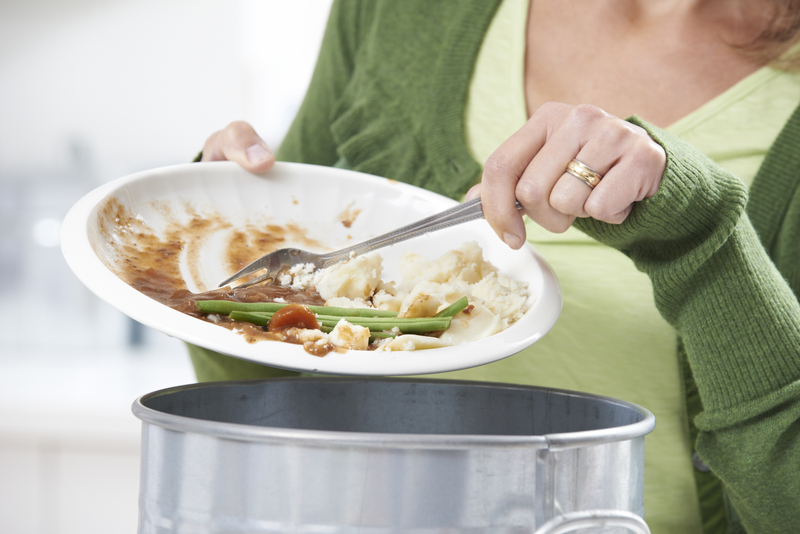Clever Tips for Saving Money While Removing Bulky Waste Items
Bulky waste items can be a headache for homeowners, renters, and businesses alike. Disposing of old furniture, appliances, mattresses, and other large objects often comes with hidden costs, from disposal fees to time-consuming logistics. Thankfully, with a smart approach, you can save money on bulky waste removal while also minimizing your environmental footprint. This comprehensive guide covers clever strategies and cost-effective solutions to help you remove bulky waste items efficiently and affordably.
Why Bulky Waste Removal Can Be Costly
Before diving into budget-friendly tips for bulky waste removal, it's important to understand why disposing of large items often incurs extra costs:
- Disposal fees: Many municipal waste services charge extra for items that won't fit in standard bins.
- Transportation: Renting a truck or paying for collection services adds to the expense.
- Labor costs: Some items require two people or special handling, increasing the removal price.
- Environmental regulations: Restrictions on landfilling certain items, like electronics or mattresses, can mean specialized recycling and higher fees.
- Time and effort: DIY removal isn't always simple--loading, hauling, and unloading can be labor-intensive.
With these challenges in mind, discovering the best ways to dispose of bulky waste items affordably becomes essential for households and businesses.

Clever Money-Saving Tips for Bulky Waste Disposal
1. Opt for Free Local Collection Services
Many local authorities, especially in larger cities, offer free or discounted bulky waste collection days. These services are often available a few times per year, allowing residents to schedule collection for large items such as sofas, mattresses, or white goods.
- Check your city or county's public works website for upcoming collection events.
- Register in advance if spots are limited.
- Understand what is and isn't accepted--refrigerators, TVs, and hazardous waste may be excluded.
Pro tip: Some communities organize neighborhood "clean-up days" where several houses collaborate for lower-cost or free bulky waste pick-up. Share scheduling information with your neighbors and coordinate for maximum convenience.
2. Donate or Sell Usable Items
If your bulky waste is still functional, giving it a second life is a smart way to save on removal costs and reduce landfill waste.
- Donate to charity: Many organizations will pick up large furniture or appliances that are still in good condition, often for free. Examples include Goodwill, Habitat for Humanity ReStores, and other local shelters.
- Sell online: Platforms like Facebook Marketplace, Craigslist, Freecycle, and Nextdoor offer excellent exposure. Even items with minor issues may find quick takers, particularly if they're free or priced to move.
Highlight: Some groups specialize in upcycling or refurbishing old items--check to see if there's a furniture bank, scrap metal collector, or repair shop in your area.
3. Break Down Large Items Yourself
One secret to cutting down bulky waste disposal expenses is disassembling items before disposal. This can:
- Reduce space: Separated components fit in smaller vehicles or bins, potentially qualifying for standard trash pickup (at no extra charge).
- Lower weight: Lighter loads mean less effort and possible cost savings at weigh-in disposal sites.
- Increase recycling potential: Materials like wood, metal, and foam can be sorted out for cheaper or even free recycling.
Always check your local waste provider's guidelines before placing item parts in regular garbage or recycling bins to be sure you're complying with disposal regulations.
4. Share or Split Costs with Neighbors
Arranging joint waste removal with neighbors can dramatically lower the per-household cost.
- Rent a skip or dumpster together and split the rental fee.
- Coordinate a shared pickup with a local junk removal service--group bookings often receive a discount.
- Organize a neighborhood "swap or sell" event where unwanted items are exchanged or re-homed, minimizing what needs to be sent for disposal.
This community-based approach is both eco-friendly and budget-wise.
5. Utilize Your Municipality's Recycling Centers
Local household waste recycling centers (HWRCs) or transfer stations typically accept bulky items for little or no charge, especially for residents.
- Verify what's accepted: some centers specialize in electronics, appliances, or construction debris.
- Bring proof of residency for discounted or free drop-off.
- Load your own vehicle (van, truck, or trailer) and avoid the extra expense of professional haulers.
For the most cost-effective bulky waste item disposal, call ahead to ensure you understand the rules and avoid unnecessary trips.
6. Seek Out Free Junk Removal Services
In some areas, scrappers or "junk haulers" will collect specific items--especially scrap metal--for free, since they can profit from recycling. Old appliances, bikes, grills, and even bed frames may be eligible.
- Look for local scrappers on classified forums, social media groups, or community boards.
- Exercise caution and ensure items are placed safely for curbside pickup.
Note: Never leave hazardous or non-recyclable items for scrappers; always check local regulations on their disposal.
7. Compare Private Junk Removal Companies
When municipal options aren't available, use comparison websites or request multiple quotes from local junk removal companies.
- Ask about volume-based pricing (charged by truckload or cubic yard) and compare with flat-fee services.
- Check if companies offer discounts for sorted or pre-placed items (e.g., if you can move items curbside yourself).
- Avoid extras like "emergency" or "stair carry" fees by preparing your items in advance.
Tip: Look for service providers with transparent, fixed-cost pricing and good online reviews to avoid hidden fees.
Sustainable Bulky Waste Removal Tactics to Save More
1. Upcycle or Repurpose Bulky Waste
Rather than paying to haul away old furniture, get creative with DIY upcycling projects. Turn a worn-out dresser into garage storage or make a bench from reclaimed wood. Many bulky waste items can become garden planters, shelving, or even pet beds with a little imagination.
- Research online tutorials tailored to your unwanted items.
- Engage kids or family members for a fun, eco-smart weekend activity.
Repurposing saves money, reduces landfill burden, and results in unique home decor.
2. Host a Garage or Yard Sale
If your home is being cleared out, a yard sale can offset removal costs while making bulky items someone else's bargain find.
- Advertise large items in community groups or signs near busy intersections.
- Bundle similar items to encourage bulk sales and speed up clearing space.
- Offer "free with purchase" deals to move tough-to-sell articles faster.
Consumers love a deal, and you may be surprised by what others are willing to collect and reuse!

Frequently Asked Questions About Cost-Effective Bulky Waste Removal
What qualifies as bulky waste?
Bulky waste items are typically objects too large for regular curbside trash pickup--think couches, beds, wardrobes, appliances, toilets, and outdoor equipment. Check your provider's list, as restrictions and accepted items may differ by locality.
Is it illegal to leave bulky waste on the curb?
In most areas, dumping bulky items illegally can result in fines. Always schedule a collection through your municipality or a licensed hauler, or wait for designated free collection days.
How can I avoid landfill disposal entirely?
Try to donate, sell, repurpose, or recycle as many bulky waste items as possible. Many materials (metal, wood, textiles) have specialty recycling options. Local charities, schools, and community groups often welcome gently used donations.
Can certain items be collected for free?
Yes--scrappers, charities, and in some cases, municipal services may accept bulky waste free of charge. Eligibility depends on item type, condition, and local programs.
Summary: Saving Money on Bulky Waste Disposal
The secret to affordable bulky waste removal is a combination of preparation, community collaboration, and creative thinking. Whether you're trying to get rid of old couches, appliances, or a garage full of random items, following these tried-and-true strategies will ensure you save money, minimize hassle, and lessen your environmental impact:
- Use municipal or neighborhood collection events whenever possible.
- Donate, sell, or give away items in good condition.
- Break down bulky items to lower costs or qualify for standard disposal.
- Team up with neighbors for group removal or shared skips.
- Leverage recycling centers for eco-friendly, cost-saving disposal.
- Let scrappers take items with recycling value.
- Shop around for fair pricing from junk removal services.
- Upcycle or transform old items into new treasures.
Remember, a little preparation and research can turn bulky waste removal into an opportunity for savings and sustainability. Don't let large unwanted items drain your wallet--put these smart tips into action and clear your space affordably!